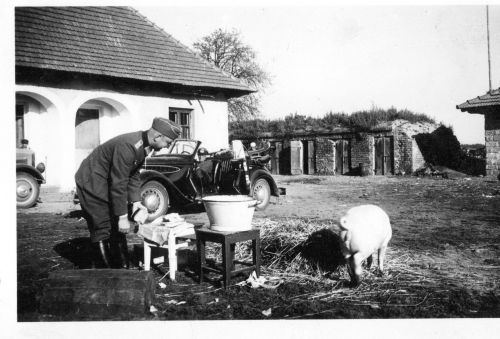Ozarow

Ozarow - German Occupation
Ozarow is a town in Opatow County, Poland. When the Second World War broke out, approximately 3,200 Jews lived in Ozarow, representing about two –thirds of the small- town’s population. Among the Jewish owned businesses in the small-town were a glass factory, a sawmill, a flour mill, and leather tanning workshops. Jews were active both culturally and politically, and their community had chapters of the Zionist movements, the Bund and Agudath Israel.
In early September 1939, Ozarow was occupied by the Germans, who almost immediately began to seize Jews in the streets for forced labour. In early October 1939, the Jews were ordered to establish a Judenrat, whose members were selected from among the community’s most respected citizens. The Judenrat was ordered to provide the Germans with updated population lists of the Jews and demanded forced labourers, who worked under the supervision of German gendarmes or Polish policemen. In early 1940, the Germans appropriated all Jewish-owned businesses in Ozarow, all the while beating and abusing Jews. Sometime later the towns Jewish inhabitants were ordered to move into a Jewish quarter, which was neither fenced in or sealed off. They were also instructed to wear a white armband marked with a Star-of-David, were forbidden to use the pavements or make contact with non-Jews. They were also required to display a sign on the front door of their homes bearing the word ‘Jude.’ In December 1940, some 706 impoverished Jews were brought to Ozarow from Wloclawek and the Judenrat put them up in the Beit Midrash, and the Jews of Ozarow provided them with equipment, clothing and food.
The following year in March 1941 there arrived in Ozarow 100 Jews who had been deported from Vienna and 792 Jews who had also been deported from Kielce, and other localities in the Radom district, and they too were put up in the Beit Midrash. Overcrowding in the Jewish quarter was severe and led to a typhus epidemic breaking out. In early January 1942, the Jewish quarter was fenced in and turned into a sealed ghetto, with some 4,500 inhabitants. But this situation was not set to last long, during the summer of 1942, when the deportations to the death camps commenced, the Germans selected Ozarow, which was located on a crossroads, to act as a site for the concentration of Jews who lived in the district. Following this decision the Germans deported 1,349 Jews to Ozarow from the Radom district; the Germans concurrently reduced the number of ration cards for the ghetto workers to one-sixth of the previous number, as they also did in the other ghettos within the district.
During the summer of 1942, large groups of youths were sent from Ozarow ghetto to labour camps, where they toiled under German supervision for long hours in exchange for meagre rations. At the end of October 1942, the ghetto was liquidated. The Jews were ordered to gather in Warsaw Square and bring along their bedding, eating utensils and clothing. SS men selected twenty-five men from among those congregated and brought them to the police station. The rest of the Jews, some 4,500, were marched to the train station, guarded by SS men and Ukrainian –SS. Along the way the guards shot many people, mostly the elderly and children. The rest were deported to the Treblinka death camp. The Jews who remained in Ozarow were put to work collecting the belongings left behind by the deportees and cleaning up the ghetto streets. When they had completed these tasks they were marched on foot in the direction of Sandomierz and shot to death by the Ukrainian-SS guards. Their bodies were tossed into wells.
Sources:
Y. Arad, Belzec, Sobibor, Treblinka – The Aktion Reinhard Death Camps, Indiana University Press, Bloomington and Indianapolis 1987
The Yad Vashem Encylopiedia of the Ghettos During the Holocaust Volume 1, Yad Vashem, 2009.
Photograph: Tall Trees Archive
© Holocaust Historical Society 2017

